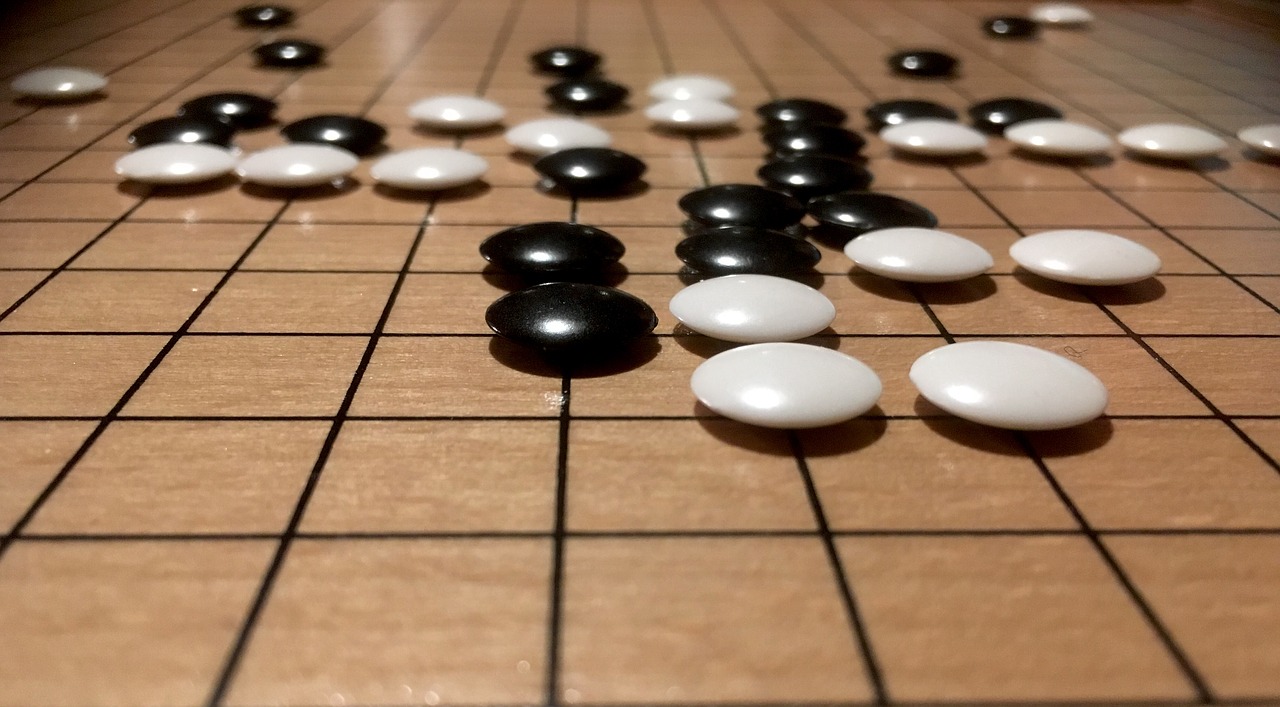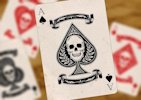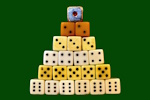Game Design Analysis - Standardizing Go Rulesets
- Game Design
Latest revision:

Go is a popular board game that has been played for thousands of years. However, the rules have not been standardized yet, so while the basic rules are the same worldwide, many rulesets have been developed that are still widely used as of this writing.
The current position of the International Go Federation is to keep the status quo on this regard to encourage sponsorships for international competitions. I believe this is true in the short-term, but in my opinion, is ultimately false in the long-term for a simple reason: inconsistent rulesets is a major barrier of entry for the game. This may not be obvious in communities where Go is already popular and played within that community, especially when some of there communities are basically entire countries, but in every other case it is a major problem.
I believe this needs to change for the game to raise in popularity internationally, but that doing so optimally is not trivial. In particular, the choice of ruleset that should be standardized is a rather difficult problem. This is my motivation for the following work below, and I hope that the larger Go community will find this work useful and open up debates about the current state of the game, and ultimately go ahead with such a change.
In this article, I will analyze the differences between common Go rulesets, and include my opinion on which ones are better and should be standardized. Having a basic understanding of the rules of Go and differences between the most popular rulesets is recommended, but not required.
Scoring
The biggest difference between rulesets is how the winner is determined at the end of the game. It is believed that the original way of doing so was stone scoring, which is done by simply figuring out which player had the most stones of their color on the final board position, and that this was progressively replaced by alternatives that generally gave the same results in order to improve gameplay.
Nowadays, two scoring methods remain popular:
- Area scoring: Each player has 1 point per living stone of their color on the board, plus 1 point per space within empty zones fully surrounded by them. The winner is the player with the most points.
- Territory scoring: Each player has 1 point per space within empty zones fully surrounded by living stones of their color, plus 1 point per captured stone of the opposite color. The winner is the player with the most points.
Interestingly, it can be mathematically proven that both scoring methods have equivalent results in the case where both players passes the same number of times, with the White player passing last.
However, there are a few critical consequences due to the difference between the two scoring systems:
- Playing a stone to exclusively expand your area gives 1 point in area scoring. This has no value in territory scoring.
- Playing a stone within your own territory loses 1 point in territory scoring. This has no value in area scoring.
Based on these facts, territory scoring should in general generate shorter games with more meaningful overall gameplay. This could be seen as an advantage, as such moves are generally not linked to interesting gameplay.
However, territory scoring has a huge problem. The problem is that captured stones also includes dead stones removed from the board at the end of the game before scoring, which begs the question of how to determine if a stone is alive or dead, or what a dead stone even is in the first place.
If we go back to stone scoring, there is no reason to have a concept of living or dead stones in such a system. Indeed, dead stones are simply stones that a player cannot save and that would be captured normally during gameplay instead of at the end of the game. (This would also cause games to needlessly drag on, hence why it is no longer popular.)
As such, with area scoring, if a disagreement about the status of dead stones arise before the end of the game, gameplay can simply be resumed in order to play out the contested position until the related group of stones is captured or successfully defended, with a default to all stones being alive if both players refuse to resume after a disagreement. This is not possible with territory scoring. Indeed, a player that believes a specific group of stones is dead should not attempt to capture it, as it would force them to play into what they believe is their own territory, and thus lose points.
Because of this, rulesets using territory scoring has to come up with a different way to determine if a group of stones is dead or alive. This has led to many issues, such as:
- Beginners being discouraged from experimenting during gameplay.
- Positions that must be proven to be dead post-gameplay when a disagreement arises, which is not possible in general and may require possible intervention of a third-party referee to settle disputes.
- Banning specific moves compared to standard gameplay during living disputes resolution, with potentially opposite results.
- Not taking into account the full board position to determine the state of a group of stones.
- Specific positions being automatically considered as dead through extra rules or past rulings, even if would not be in specific cases when played out. (Common examples are "seki" and "bent four in the corner" positions.)
The only detail remaining is whether using area scoring is better or worse to count manually on a physical board over territory scoring. Fortunately, this problem is pretty much irrelevant, as it is possible to use territory-style counting methods in area scoring by adding rules that gives a captured stone to the opponent when passing, and forcing the White player to pass last.
Therefore, my opinion is that area scoring should be the standard Go scoring rule.
As a final note on this topic, I would like to mention that one popular area scoring method is called half counting, which is a good system for determining a game outcome for those used to it, but a rather confusing one otherwise, especially for beginners, as the result is half of the score difference. This should be taken into account when determining a standard way to count scores, but it is out of scope of this analysis as I do not consider counting rituals as part of the game itself.
Repetition
All Go rulesets contains an explicit or implicit anti-repetition rule called the basic ko rule. This rule stipulates that it is illegal to play a move that would cause the game board to revert to the same state as the move prior, as if the previous move was undone. This rule is generally considered to be a fundamental component of the game of Go.
The problem is that this rule does not cover all possible repetitions that may occur during gameplay, and rulesets have implemented different ways to tackle the remaining cases. Here are those from popular rulesets:
- No result: Basically, the game never happened. This may be caused automatically, by mutual agreement or referee decision. This is not a desirable solution, as it may lead to pointless games and infinite matches.
- Draw: Each player shares half of the victory. This may be caused automatically, by mutual agreement or referee decision. Note that while this rule is compatible with the basic ko rule, it is inconsistent with it.
- Ing ko rule: This rule is an attempt to describe intuitive situations where play should be prohibited based on shapes, types of fighting and status of stones. However, because it is extremely complex, poorly defined and cannot always be evaluated in a reasonable amount of time, it is an objectively bad rule.
- Positional superko: Instead of preventing only the prior game board state, this rule prevents all previous game board states from reoccurring. It implicitly includes the basic ko rule. The disadvantages are that it may be hard to keep track of all previous board positions, and it may be counterintuitive at first glance to prevent a game state with an identical board position but with a different player to play.
- Situational superko: This rule is the same as positional superko, except that it allows game board repetition in the case where the next player to play differs. However, because passing is still allowed in such a situation, it causes a loop that restricts the next player from replaying its first move. Because of the resulting pointless sequence of moves, this rule does not fully fulfill its purpose of preventing repetitions. It also introduces inconsistencies in gameplay since loops are sometimes allowed and sometimes not.
- Natural situational superko: This rule is the same as situational superko, except that a game state that occurred immediately following a pass is ignored when considering repetition. Note that this does not resolve the issues with situational superko. Worse, the basic ko rule is no longer implied when the player that would undo the game state passed on the previous turn. (On an unrelated note, I'm also not really seeing what's so "natural" about this version of superko.)
Between all of these solutions, the only ones that remain reasonable are draw and positional superko, and I can't think of better solutions myself. In addition, a draw result is an outcome that is generally preferable to avoid if there is a way to continue gameplay to a potentially more decisive result. As the only real issue with positional superko is having to keep track of previous game positions, which attentive players should generally notice, and can be easily mitigated when playing Go on a computer, I believe the latter option is superior.
In other words, my opinion is that repetition in Go should be prevented as a standard, and by positional superko.
Suicide
Consider the case where placing a stone on a specific point on the board would not capture any of the opponent's stones, but causes the group of stones linked to the newly-placed stone to have no liberties. If no rule is in place to handle this situation, the otherwise-dead group would just hang in there indefinitely. I don't what kind of game this would be, but it wouldn't be Go.
As such, rulesets came up with two potential rules to handle this case: either the move is illegal, or the opponent immediately captures the offending group and removes the stones from the board.
Before we move on, it's worth noting that suicide moves can be beneficial in some circumstances, for example to create ko threats or to increase the number of liberties, so the choice of rule here is not trivial because of this.
Basically, preventing suicide restricts game possibilities from existing. As such, at first glance, it seems advantageous to allow suicide in order to explore the game of Go more, as long as the added complexity does not cause some games to lengthen too much, which circumstantial evidence from rulesets that do allow suicide suggests. As such, such a rule seems reasonable.
In addition, let's assume that we would make suicide illegal. In this situation, I predict that there's going to be at least one high-profile game where the outcome would be different if suicide would have been allowed, creating a mass debate over whether suicide should be allowed. Such a situation would be a strong argument to integrate the rule in the standard ruleset anyway.
One potential gameplay issue I can think of is that suicide might not just be used as a strategic element to win the game, but as a tool to artificially delay the game. In particular, a sore loser could start killing its own groups and recreating them just to frustrate the other player. That said, making suicide illegal would still allow sore losers to pointlessly fill up territory, needlessly waiting between moves, passing for no reason and arbitrarily contesting the status of living and dead stones. As such, I don't really think banning suicide would solve the problem of bad sportsmanship.
However, a much bigger issue with suicide is that it is generally a rare occurence which doesn't affect the game result much. For a beginner, the suicide rule is more complex to learn and apply, and something to often keep into consideration during gameplay, significantly raising the barrier of entry to the game. For an experienced player, it's something that rarely matters except in very specific circumstances rarely encountered during normal play. In other words, the little benefit the suicide rule grants at opening up new, potentially interesting situations comes at the price of potential new players.
As a reference, Magic: The Gathering originally had a mana burn rule, and despite the fact that mana burn was seen as interesting to some players due to the obstacle it presented to achieve victory, it was eventually removed in part due to the barrier of entry that rarely mattered issue, and it didn't have any noticeable negative impact on the game afterwards.
Because of this, my opinion is a standard Go ruleset should make suicide moves illegal.
Komi
Because the Black player has the advantage of playing first, modern Go rulesets compensate the White player by giving them free points. This is known as the komi rule. The problem is that Go is an unsolved problem, so the exact compensation to give for a fair game is unknown, and this has varied between rulesets.
Nowadays however, Go AIs based on deep learning from self-play have reached superhuman level, and can estimate winning probabilities of board positions learned from statistical analysis. As such, training a deep learning AI with different compensations would allow them to reveal which one has the closest expected value of the desired 1/2 for a fair competition.
Note that it's possible that an AI's estimation may significantly differ from average human game results due to the difference in skill, but it should be a good indicator regardless. Worst case scenario, it's always possible to train AIs to make them mimic human skill by making them look at relatively recent games from available databases, and give an assessment based on the resulting metagame.
As such, my opinion is that standard komi compensation in Go should be based on an AI estimate of a fair game.
Note that, as of this writing, the fair komi value on a standard 19x19 board appears to be 7. This is supported by KataGo's self-play results, including raw data and statistics collected by its creator.
Draws
Pretty much all popular rulesets nowadays prevent draws during the scoring process. They either add or subtract one half of a point of compensation to komi in order to prevent draws, or have an equivalent rule that cause one of the players controlling a specific color to win by default as a tiebreaker.
The idea is that having the game end with a clear non-random winner like that might make it more exciting to some, assuming the resulting advantage is humanly tolerable. However, theoretically speaking, the only way to make Go a fair game is to allow draws, and preventing draws would allow a perfect player to always win when playing as the advantaged color. The problem is then to determine if having "boring" games caused by draws are better or worse than having "boring" games caused by an unfair color advantage. With perfect players, draws are clearly better as they require both of them to showcase their best skills instead of the disadvantaged player being allowed to slack off. With human players however, this is a conundrum.
It's important to remember that the correct value of komi compensation for a fair game is currently unknown, so a difference of half of a point can be viewed as acceptable when there's insufficient information to determine it, which probably explains why it was so commonly accepted in rulesets. Again, AIs can help us estimate that difference as described in the previous section, and can be used to help determine to which player the advantage should be given to be as close to fair as possible.
Still, a small difference in compensation compared to perfect komi may lead to large probability differences between similarly-skilled players, depending on their overall mastery of the game. Even when this is not the case, it still throws doubt as to whether any win from an advantaged player most likely occurred because of superior skill or simply by default, although how much of an issue this is is purely subjective. Another important point to note is that what matters at the end of a game is the direction in which the score difference occurs, not how large it is. Because of this, the resulting difference in strategies may affect the scoring difference as well.
That said, we can still reasonably assume that the expected game result with draws allowed should be the same as with draws prevented, except where a draw would have occurred in the former case in which case the win should occur to the advantaged player in the latter case.
Based on this assumption, one thing that can be noted immediately is that if players were assigned random colors at the beginning of a game, and if there is a difference in skill between players, the probability of a draw in a game in which draws are allowed would imply that the win would be awarded to the less-skilled player at half of that probability. In other words, preventing draws for this game is no better than a coin toss tiebreaker.
Let's now consider a 2-game match in which players would switch colors between games. Note that the resulting match is always fair. If the previous assumption is true, then I can prove a counterintuitive result by considering every possibility that may occur if draws are allowed during each game:
- No draws in either game: The match result should be identical to if draws would have been prevented, as the result of individual games implies the same result in that ruleset.
- Draws in both games: The match result should be identical to if draws would have been prevented, because each draw implies a win but for different players in that ruleset.
- A draw in one game but not the other: The match result is never a draw. However, this is not true if draws would have been prevented in the case where the draw implies a win for the player that lost the other game.
As every possibility has either equivalent results between rulesets or may cause less match draws when allowing game draws, then the probability of drawing this 2-game match when game draws are allowed is lower or equal to than when prevented.
So, by attempting to prevent draws, we can create a situation where more draws can arise. As such, we also have to consider that even if individual games could be more exciting, then the overall matches could be less exciting, at least based on this metric. That said, an argument could be made by saying that my arbitrary selection of a match composed of two games is itself a problem, and that all matches should be composed on an odd number of games to resolve this issue. Again, this does no better than a coin toss tiebreaker in the case of a single game match, but what about longer matches?
For argument's sake, let's consider a 3-game match with drawing allowed where players switch colors between games and the starting color assignment is random, or more specifically the result for a specific player based on the result of its individual games:
- 2 wins + anything: Win. If draws would have been prevented, the outcome would have been the same.
- 1 win + 2 draws as different colors: Win. If draws would have been prevented, the outcome would have been the same.
- 1 win + 2 draws as same color: Win. If draws would have been prevented, the outcome would have been random.
- 1 win + 1 draw + 1 loss: Draw. If draws would have been prevented, the outcome would have been random.
- 3 draws: Draw. If draws would have been prevented, the outcome would have been random.
- 2 draws as same color + 1 loss: Loss. If draws would have been prevented, the outcome would have been random.
- 2 draws as different colors + 1 loss: Loss. If draws would have been prevented, the outcome would have been the same.
- 2 losses + anything: Loss. If draws would have been prevented, the outcome would have been the same.
So this time, we end up in a situation where a clear 3-game match win or loss when allowing draws could result in the opposite outcome half of the time when preventing draws due to unfairness. Meanwhile, we still do no better in preventing match draws than a coin toss tiebreaker. Clearly, this is not a desired scenario.
I could continue with matches of four games or more, but I think you get the idea. If not, simply consider that longer matches can be constructed by mathematical induction of the 2-game and 3-game match described above by appending additional 2-game matches to them, amplifying the effect of tiebreakers. Feel free to do the math for these longer matches if you are not yet convinced.
Honestly, at this point, I feel that any advantage that could be subjectively perceived by preventing draws are largely overshadowed by the disadvantages I just pointed out, with one exception: an absolute last-resort tiebreaker in a tournament. But then again, who really wants to celebrate a champion declared over an unfair tiebreaker? People came up with various creative and fairer alternate solutions for tiebreakers, and if somehow none can be found, I'd rather allow the tie in this case.
As a final note, a common critique of Chess is that high-level games are often drawn, but I find that people that find these draws "boring" are usually lower-skilled players that do not realize the level of strategy involved throughout that led to these results.
Considering all of the above, my opinion is that draws during scoring should be the standard in Go.
Recap
Here are again my personal recommendations for a standard Go ruleset, based on the arguments presented:
- Area scoring
- Positional superko
- No suicide
- Fair komi estimate based on modern AI analysis (7 as of this writing)
- Draws allowed during scoring
There are of course a few minor details that I did not go into, but I believe the above list is a strong foundation for a standard ruleset that should be implemented internationally as soon as possible.
Related content I wrote

How to Play Liar's Deck (From Liar's Bar) - Full Rules and Variants
- Video Games, Game Design
The following are the rules of the Liar's Deck bluffing card game and its official variants, first introduced in the Liar's Bar video game. These rules are based on its in-game tutorials, observations I made from gameplay sessions, and comments from the game's developers. While there may be a few…

I Designed the Perfect Gambling Game, But...
- Mathematics, Business, Game Design
Back in 2006-07-08, during the 13th Canadian Undergraduate Mathematics Conference at McGill University, I presented a gambling game I designed with the novel property of being both advantageous to players and the house, and that despite this proprety, that pretty much nobody in their right mind…

Game Design Analysis - The Lemniscate A-set ARG
- Game Design, Video Games
Alternate reality games (ARGs) are interesting to review. Half marketing, half entertainment, and 100% live, their very nature makes them hard to experience if you miss them. In the case of the Lemniscate A-set ARG however, almost all of the content is still available today. As I took part in it…

Microtransactions Are Corrupting Video Games
- Game Design, Business, Video Games
In 2017, Electronic Arts released Star Wars Battlefront II. Very quickly, many were angered at the predatory way microtransactions were implemented in the game, so much so that governments around the world noticed and have been considering whether regulations around them are necessary to protect…

Reasonable Doubt as a Game Mechanic
- Game Design, Mathematics
Detective fiction, and particularly whodunits, have been really good at being engaging people in attempting to solving the mystery presented before the final reveal. Video games allows such stories to thrive with a level of interactivity that can directly engage the player in this process as an…